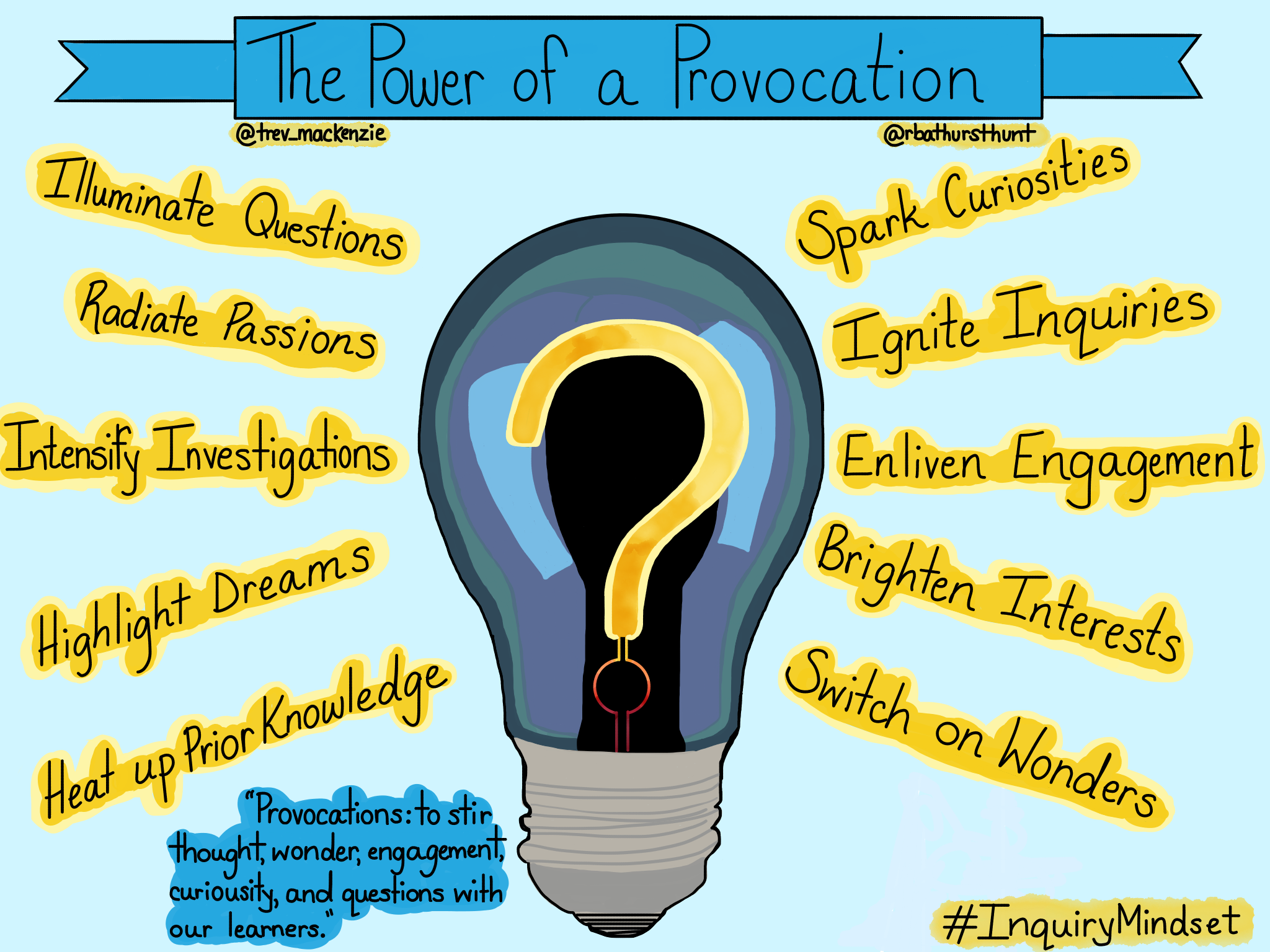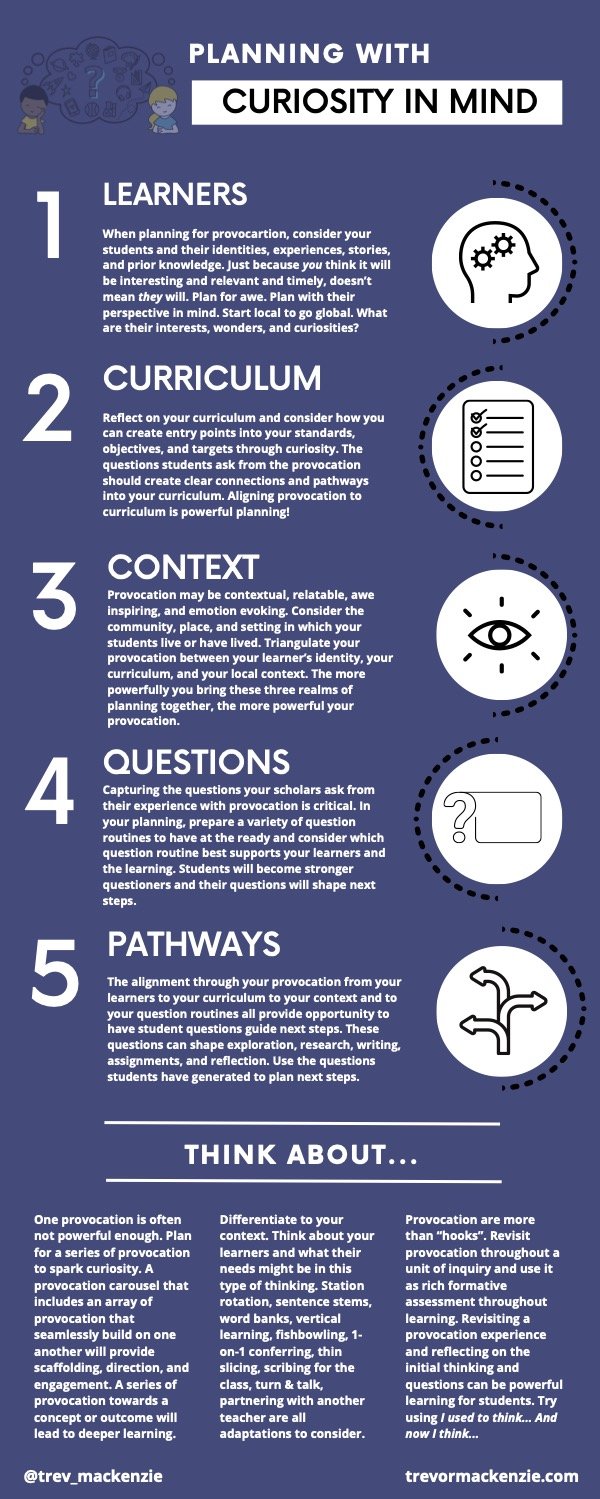I am often asked how might I define inquiry. It seems a grappling point for many. Do we discuss inquiry from its theoretical roots, defining it by the likes of Dewey, Vygotsky, and Freire? Or do we circle around the experience of inquiry and focus on an inquiry cycle that spirals learners through a process of learning that is more empowering, agentic, and relevant? Might we also tether ourselves to specific routines, structures, and protocols that shift the dynamic of learning to be more exploratory and less explanatory (thank you Guy Claxton for this language)?
All of these pathways to discourse are fruitful, however when facing this question and underlying need for clarity I find myself most often talking about one word: curiosity.
Curiosity is a powerful thing. In all of my work with schools over many years we have observed several amazing benefits to curiosity. Let me share a few with you now, each of which I am certain you have experienced yourself in those eating out of the palm of your hand moments. When kids are curious in their classrooms there are a bunch of desirable outcomes that surface like byproducts of their wonderings. First, when kids are highly curious in their schooling experience they tend to do better in school. Academic achievement increases. Kids do better on all of the traditional schooling measurements for growth and achievement, both internal and external assessments across subjects and skills. Curiosity breeds success.
Second, when kids are highly curious in their schooling experience their attendance improves. They come to school more often and in a more timely manner. This is especially important when it comes to the high school setting where students vote with their feet. Broadly speaking, if the learning isn’t relevant, interesting, or purposeful for the students who are not playing the game of school, they opt out not putting in a genuine effort, skipping class, or dropping out of school altogether. When it comes to the littles (primary / elementary aged children), they also vote with their feet but in a different way. In classrooms that value and actively cultivate curiosity, there are fewer behavioural challenges and interventions from the office / admin. When children are curious there are fewer disciplinary referrals. Curiosity is motivating.
And last, when students are highly curious in their schooling experience their feelings about school change. When we ask them how they feel about school they say things such as:
school is fun / engaging / interesting
I enjoy / love my class
I am happy at school
I like what I am learning about
my teacher likes me / I like my teachers / I like my peers
Curiosity impacts how we see others and how we see ourselves.
In the inquiry setting, teachers intentionally plan for curiosity through the tool of provocation. The intent of a rich and powerful provocation is to get students curious about the curriculum. The responsibility of the teacher is to look at their curriculum, the standards and objectives that we must teach, and consider what planned objects, resources, people, places, and experiences might spark curiosity in our students. Inquiry teachers embrace curiosity when they recognize it. Inquiry teachers lean into curiosity when students enter the classroom with something highly interesting on their minds. And inquiry teachers plan for curiosity using provocation.
I work with teams of teachers around the globe to plan for curiosity. We review the curriculum and unpack a myriad of provocations, taking into account our students and their identities, cultures and contexts, prior knowledge, and their strengths and stretches. We program and plan from a start point of curiosity and when this objective is met, we remain tethered to it, spiralling back to provocation throughout a unit of study as we ask ourselves what do my students know? What do my students not know? And what do my students want to know?
Designing provocation is powerful business. Given the high yield outcomes we witness, taking time and collaboratively planning for curiosity is something the schools I support are deeply invested in.
To help in this process, below is a simply infographic to use as a guide to your provocation planning. Print it off and centre it wherever you plan or have collaborative conversations with colleagues. If you would like to see examples of provocations, visit my instagram feed and tap through the provocation highlights at the top of the feed.
Stay curious,
Trevor



